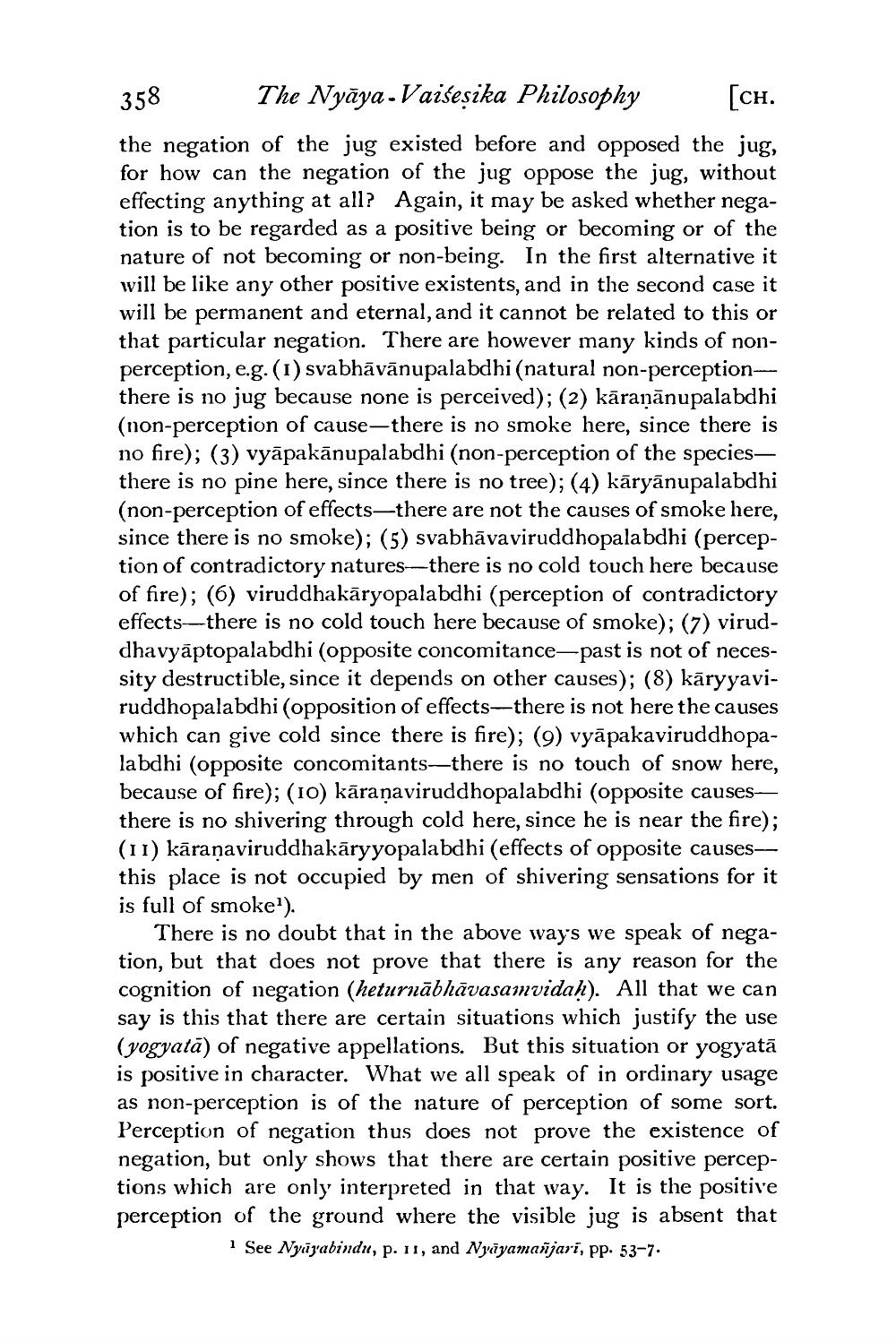________________
358
The Nyāya-Vaiseșika Philosophy [ch. the negation of the jug existed before and opposed the jug, for how can the negation of the jug oppose the jug, without effecting anything at all? Again, it may be asked whether negation is to be regarded as a positive being or becoming or of the nature of not becoming or non-being. In the first alternative it will be like any other positive existents, and in the second case it will be permanent and eternal, and it cannot be related to this or that particular negation. There are however many kinds of nonperception, e.g. (1) svabhāvānupalabdhi (natural non-perceptionthere is no jug because none is perceived); (2) kāraṇānupalabdhi (non-perception of cause—there is no smoke here, since there is no fire); (3) vyāpakānupalabdhi (non-perception of the speciesthere is no pine here, since there is no tree); (4) kāryānupalabdhi (non-perception of effects—there are not the causes of smoke here, since there is no smoke); (5) svabhāvaviruddhopalabdhi (perception of contradictory natures--there is no cold touch here because of fire); (6) viruddhakāryopalabdhi (perception of contradictory effects-there is no cold touch here because of smoke); (7) viruddhavyāptopalabdhi (opposite concomitance-past is not of necessity destructible, since it depends on other causes); (8) kāryyaviruddhopalabdhi (opposition of effects—there is not here the causes which can give cold since there is fire); (9) vyāpakaviruddhopalabdhi (opposite concomitants—there is no touch of snow here, because of fire); (10) kāraṇaviruddhopalabdhi (opposite causes there is no shivering through cold here, since he is near the fire); (11) kāranaviruddhakāryyopalabdhi (effects of opposite causesthis place is not occupied by men of shivering sensations for it is full of smoke').
There is no doubt that in the above way's we speak of negation, but that does not prove that there is any reason for the cognition of negation (heturnābhāvasamvidaḥ). All that we can say is this that there are certain situations which justify the use (yogyatā) of negative appellations. But this situation or yogyatā is positive in character. What we all speak of in ordinary usage as non-perception is of the nature of perception of some sort. Perception of negation thus does not prove the existence of negation, but only shows that there are certain positive perceptions which are only interpreted in that way. It is the positive perception of the ground where the visible jug is absent that
i See Nyabindu, p. 11, and Nyāyamanjari, pp. 53-7.




